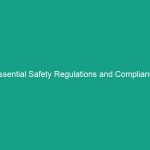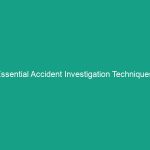Introduction
Good morning team! Today, we’re going to dive into an important topic that affects our daily operations: Essential Weed Wacker Safety Guidelines. Whether you’re trimming edges or clearing brush, using a weed wacker can pose significant risks if proper Safety Measures aren’t followed. Understanding how to operate this equipment safely is crucial not just for your well-being but also for the Safety of those around you. Let’s explore why adhering to these Safety guidelines is vital for our workplace.
Understanding Essential Weed Wacker Safety Guidelines
Weed wackers, also known as string trimmers, are powerful tools used for landscaping and lawn Maintenance. They are designed to cut through grass and weeds with a rapidly spinning line. However, their power comes with risks. Improper use can lead to severe injuries, including lacerations, eye injuries, and hearing loss. By following essential weed wacker safety guidelines, we can minimize these risks and protect ourselves and our colleagues.
One common misconception is that weed wackers are simple tools that require minimal Training. In reality, understanding how to handle these machines safely is crucial for preventing accidents. Always remember: Safety First!
Key Hazards, Risks, and Safety Considerations
Using a weed wacker involves several Hazards that must be recognized and mitigated. Here are some key risks to consider:
- Flying Debris: The spinning line can eject stones, sticks, and other debris at high speeds, potentially causing eye injuries or other harm.
- Noise-Induced Hearing Loss: Prolonged exposure to the loud noise of a weed wacker can lead to hearing damage.
- Vibration Exposure: Extended use can result in hand-arm vibration syndrome, affecting blood circulation and causing numbness.
- Burns from Hot Engines: The engine can become hot during Operation, posing a risk of Burns if touched.
Ignoring these risks can lead to serious accidents. For instance, a coworker once suffered an eye injury from debris while using a weed wacker without proper Eye Protection. This incident could have been avoided with the right Safety Measures in place.
Best Practices, Procedures, & Actionable Advice
To ensure safety while using a weed wacker, follow these Best Practices:
- Wear Personal Protective Equipment (PPE): Always wear Safety Goggles, gloves, long pants, and sturdy boots. Ear protection is also recommended to mitigate noise exposure.
- Inspect Equipment Before Use: Check for any damage, such as frayed lines or loose parts. Ensure that all safety features are functioning properly.
- Clear the Work Area: Remove any obstacles, debris, or potential hazards from the area where you will be operating the weed wacker.
- Follow Operating Instructions: Always read and understand the manufacturer’s instructions before using the equipment.
- Maintain a Safe Distance: Keep bystanders and pets at least 15 feet away from the work area to prevent injuries from flying debris.
- Use Proper Technique: Hold the weed wacker with both hands and maintain a firm grip. Avoid cutting on steep slopes or uneven terrains unless you have proper training.
Let’s consider a real-life scenario: A worker who neglected to clear the area before using a weed wacker accidentally struck a hidden stone, causing the tool to kick back and injure their leg. This highlights the importance of preparation and following safety protocols.
Regulations, Standards, and Compliance
Compliance with safety Regulations is crucial in maintaining a safe work Environment. The Occupational Safety and Health Administration (OSHA) establishes guidelines for safe equipment operation. Familiarize yourself with osha Standards related to landscaping and equipment use. Additionally, our company has specific safety protocols that align with these regulations.
Compliance not only protects employees but also shields the company from potential legal issues arising from workplace accidents. Always prioritize adherence to these standards to foster a culture of safety.
Employee Engagement & Discussion
Now that we’ve covered the essential guidelines, let’s open the floor for discussion. Have any of you encountered challenges while using a weed wacker? What safety measures do you think are the most effective? Sharing your experiences can help us all learn and improve our safety practices.
Conclusion & Key Takeaways
In conclusion, adhering to these essential weed wacker safety guidelines is not just a recommendation; it’s a necessity for everyone’s well-being. Remember to wear your PPE, inspect your equipment, and maintain a safe work environment. By practicing these safety measures, we can significantly reduce the risk of accidents and injuries.
Thank you all for your attention and commitment to safety. Let’s continue to prioritize safety in every task we undertake!


